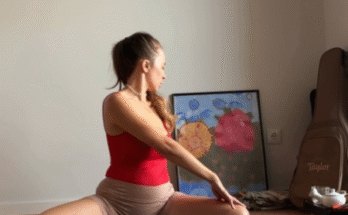
There are two things I’ve always loved combining: fashion and fitness. It’s not just about wearing something functional for the gym—it’s about feeling confident, comfortable, and ready to take on a workout or even just a busy day. Recently, I did a Free People try-on haul and asked myself the question: are these pieces really gym-ready, or are they just too hot for the gym?
Free People has built its reputation on boho-chic, casual elegance, and more recently, its FP Movement collection, which aims to bring their signature free-spirited style into activewear. With celebrities and influencers raving about it, I decided it was time to test it out for myself. What I found was a mix of breathable fabrics, trendy cuts, and a whole lot of personality—though not every piece was designed with squats and burpees in mind. Let’s break it down.
First Impressions
When the package arrived, I could already tell this wasn’t going to be your average athletic wear. The colors were rich and earthy, but also sprinkled with bold neons and soft pastels. The fabrics ranged from buttery-soft leggings to airy mesh tops. Everything screamed stylish comfort.
Trying on the first few pieces, I realized right away: Free People doesn’t just want you to exercise—they want you to feel like you could walk straight from yoga to brunch without changing a thing. That versatility is appealing, but it also raises the question: if you really break a sweat, will these clothes hold up?

Leggings: Sleek, Snug, but Sweat-Ready?
Free People leggings are one of their biggest draws. I tried on three pairs:
- The Good Karma Leggings – These are the crown jewel of FP Movement. The ribbed texture hugs the body, and the high waistband provides excellent support. Squat test? Passed. Sweat test? Surprisingly decent, though lighter colors might show marks if you’re doing intense cardio. What I loved most was that they were seamless, which means no awkward lines digging into your skin. They felt like second skin—great for yoga, Pilates, or weightlifting.
- The Happiness Runs Leggings – Lightweight, stretchy, and soft. These are perfect for lounging or light workouts, but if you plan to hit spin class or HIIT, be warned: they might not stay put as well. They’re adorable, but maybe too cute to get drenched in sweat.
- Printed Statement Leggings – These are the “fashion leggings.” Eye-catching patterns, bold colors, but they felt more like something I’d wear to a casual outing or maybe a dance class. The fabric is breathable but thin, meaning you’ll want to choose wisely when it comes to underwear and squat depth.
Verdict: Some leggings are absolutely gym-ready, while others are Instagram-ready.

Sports Bras: Support vs. Style
Free People bras are known for their strappy details and unique designs. They look amazing under an open-back tank, but how do they perform?
- The Happiness Runs Crop: This piece is famous because it doubles as a bra and a crop top. It’s soft, ribbed, and comes in dozens of colors. For low-impact workouts like yoga or barre, it’s perfect. But if you’re doing jumping jacks or sprints, you’ll probably need more support.
- All Clear Bra: This one was designed with actual performance in mind. Medium support, breathable mesh panels, and adjustable straps make it more practical. I found it suitable for weight training, though not quite strong enough for running.
- Strappy Statement Bras: These are gorgeous but definitely fall under the “too hot for the gym” category. They’re perfect for layering under a tank or pairing with high-waisted jeans, but don’t expect them to handle serious cardio.
Verdict: Free People’s bras are for showing off, not always for sweating hard.
Tops and Outerwear: Versatility Wins
If there’s one area where Free People shines, it’s tops and layering pieces. I tried a mix of tanks, pullovers, and jackets, and they all had that effortlessly cool vibe.
- Easy Does It Tank: Light, breathable, and perfectly flowy. Great for hot yoga or a casual walk. You can also tuck it into jeans for a coffee run.
- Hit the Slopes Fleece Jacket: This oversized fleece is iconic. It’s not gym gear at all, but it’s the perfect post-workout cozy layer. It makes you look like you planned your whole outfit even if you just rolled out of bed.
- Hot Shot Onesie: This is one of Free People’s most popular activewear pieces. It’s basically a one-piece romper made from lightweight material. It’s comfy and stylish, but in the gym? Honestly, it’s a little tricky. You wouldn’t want to peel it off mid-workout to run to the bathroom. However, as an athleisure statement, it’s unbeatable.
Verdict: FP’s tops are where fashion meets function. Some are practical, but most lean toward lifestyle wear.

Shoes and Accessories
Free People isn’t known for gym shoes, but they do offer sneakers and accessories. I tried a pair of slip-on trainers—comfortable but not supportive enough for weightlifting. They’re more for errands and casual wear. Accessories like their oversized scrunchies and tote bags? A big win. They’re practical, cute, and fit the brand’s free-spirited vibe.
Styling Beyond the Gym
What really stood out in this haul is how easily these pieces transition from workout to daily life. Imagine this: you wear your Good Karma leggings and Happiness Runs crop to yoga, toss on the Hit the Slopes jacket, and suddenly you’re brunch-ready. The line between fitness wear and streetwear has blurred, and Free People knows it.
Too Hot for the Gym?
So, back to the big question: Is Free People Movement too hot for the gym?
The answer is both yes and no.
- Yes, because some pieces are designed more for looks than practicality. Those strappy bras and delicate fabrics aren’t going to survive a hardcore bootcamp session.
- No, because the core staples—like the Good Karma leggings and a few of the sturdier bras—really do perform well. They’re supportive, breathable, and made with active people in mind.
But here’s the thing: not everyone goes to the gym just to sweat buckets. Sometimes, we want to feel stylish, confident, and comfortable. Free People nails that niche. They’ve built a collection that appeals to people who want to move freely and look good while doing it.

Final Thoughts
If you’re looking for serious, no-nonsense gym wear for powerlifting or marathon training, Free People might not be your first choice. Brands like Nike, Lululemon, or Under Armour are still more performance-focused. But if you’re someone who enjoys low-to-medium intensity workouts—yoga, barre, Pilates, light cardio—and wants pieces that double as everyday fashion, then FP Movement is a gem.
Free People has created activewear that’s fun, flattering, and flexible. Sure, some of it might be too hot for the gym, but isn’t that the fun of it? You get to decide whether today’s workout calls for functionality, fashion, or a little bit of both.
So, would I recommend Free People for the gym? Selectively, yes. Would I recommend them for living your best stylish life, whether you’re sweating or not? Absolutely.



